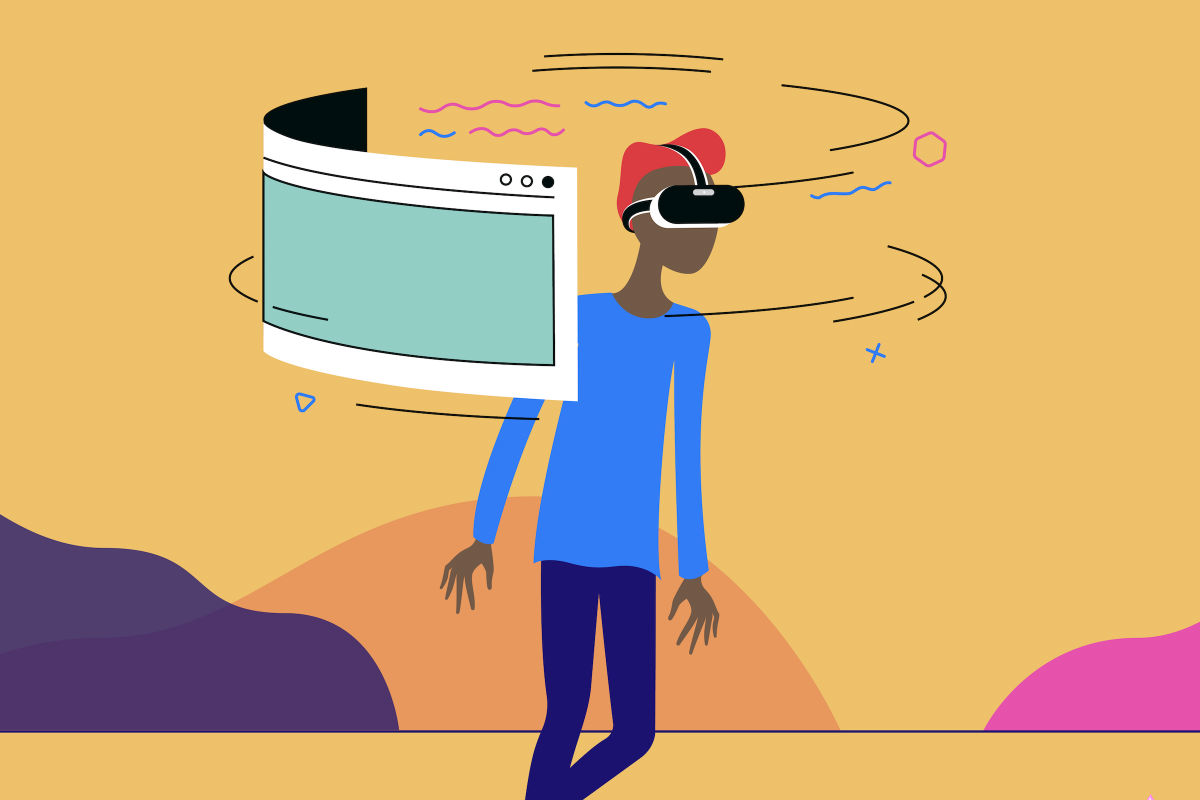
Have you ever been surfing the web and found yourself wishing it was pressed up against your face in a pair of VR goggles?
Yeah, neither have we. But this morning, Mozilla officially launched Firefox Reality, a VR-powered web browser that does just that. The phrase “VR web browser” rolls off the tongue well, but what does that really mean?
To get a better idea of what Mozilla has in mind, we visited the company’s office in Portland and went hands-on with Firefox Reality.
VR in the web
We donned an Oculus Go, with controller in hand, and started up the Firefox Reality app. Unsurprisingly, the app launched into a virtual environment (this one was some sort of mushroom cave), with a familiar floating window in front. Mozilla’s vision of browsing the web in VR feels a lot more like an app store than a web browser like Chrome or Firefox.
This home window offers a few different categories for finding VR web content, curated by the folks over at Mozilla. There wasn’t a ton of content at the time, but examples included a VR music video from the band LCD Soundsystem and a few simple VR games. Each of these are, of course, web applications that can be accessed from their URL on any browser, including the one you’re reading this on.

After clicking on one of these websites, you’re given a 2D preview before entering. Mozilla says this view was included to lessen the abrasive effect of jumping around from site to site in VR.
They also showed a meeting place app called Hubs, which was pitched as “Skype in VR.” There’s been many attempts to offer that on other platforms, such as Facebook’s Space app. But unlike Facebook, Hubs is meant to be a more neutral meeting environment where a person doesn’t see all your photos and network connections tied to your account. Mozilla imagines Hubs being used for everything from casual hangouts to business meetings where documents can be exchanged.
That said Mozilla’s offering is limited compared to Spaces. Hubs lets you pick up a pencil and write in three dimensions, but it was far from a polished app. Mozilla promises that features will continue to be rolled out a steady pace, including important things like bookmarks and links.
Trying to move the needle
.gif)
A browser that’s used mostly to find VR experiences might seem mundane, but Mozilla thinks there’s more here than meets the eye. You can type or speak directly into the search bar to head right over to a site you know, for example. That kind of browsing feels a bit more like your typical web experience, allowing someone to follow links down any rabbit hole. Mozilla hopes the openness of the web will lead to a boom of new VR content for people to experience.
“The feedback we heard the most was that users were having a hard time finding new games and experiences,” said Andre Vrignaud, the head of mixed reality platform strategy at Mozilla. “This is why we built a feed of amazing content into the home screen of Firefox Reality.”
These new VR-enabled web apps are developed under the WebXR Device API. The adoption of this web standard is what Mozilla and other companies hope will bring web VR to the masses. If VR has a chance of breaking through into the mainstream, it’ll need more accessible tools — and WebXR could be just that.
“We want to bring the full whimsical web to VR,” said a Mozilla representative at the demo. “We want the actual web to be there.”
Moving VR forward won’t be easy for Mozilla. New hardware continues to be released year after year, both in high-end and budget-friendly, but mass adoption in the mainstream isn’t happening. Is a VR-powered web browser going to turn the tide? Probably not — but Mozilla thinks it could at least make it more fun.
Firefox Reality can be downloaded now for free in the Viveport, Oculus, and Daydream app stores.
Editors' Recommendations
- This new VR headset beats the Vision Pro in one key way and is half the price
- We have some bad news for Quest owners
- What’s behind customers returning their Vision Pro headsets?
- Vision Pro durability test turns up a few surprises
- Vision Pro headset proves buggy for prominent Apple tipster


